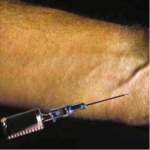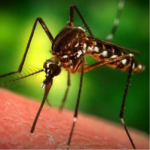It is the human immunodeficiency virus which attacks the immune system through the destruction of the withe blood cells called CD4, which are responsible of dealing with infections. Once the HIV virus manages to weaken the defense of the person this gives way to get any opportunistic disease. These infections contracted because of the weakness of the immune system are called AIDS, which means Acquired Immune Deficiency Syndrome. This is the last or terminal stage of the disease. Not all people with HIV develop AIDS, thanks to medication adherence or strict medication.
How did HIV/AIDS originate?
During the eighties US doctors discovered uncommon infections in people of certain society groups. The first cases were detected among homosexual people of New York and California in the United States. Soon, the same complications were observed among people addicted to intravenous drugs. All these events demanded an answer to the beginning of the disease.
A possible theory: Scientists identified a type of chimpanzee in West Africa as the source of the infection of HIV in Human Beings. According to scientists, the version of the chimpanzee immunodeficiency virus (called simian immunodeficiency virus -SIV) was most likely transmitted to human beings and suffered a mutation to change into HIV. It was transmitted by people who hunted these chimpanzees to get their meat and entered through contact with the infected blood. In a matter of decades, the virus spread throughout Africa and around the world.
What is the difference between contagion and transmission?
Contagious disease: It is caused by an infectious agent that can survive outside the human body, in the environment (water, air, food, etc.) or inside carrier animals for prolonged periods of time. Another individual can get the disease throughout contact with any of these means. This contagious infectious agent spends part of its life cycle outside the human body.
Transmitted disease: It is caused by and infectious agent that can survive just very few minutes outside the human body. That makes it virtually impossible for it to infect other people through the environment, water, food or carrier animals. The infectious agents spend their whole life cycle (are born, reproduce and die) inside the human body.
It can be transmitted only by direct contact between the body of a person and another through an exchange of fluids between the healthy and the infected person. Fluids that transmit HIV are blood, semen, vaginal fluids and breast milk. No cases of transmission have been described, neither by saliva nor by tears or sweat.











